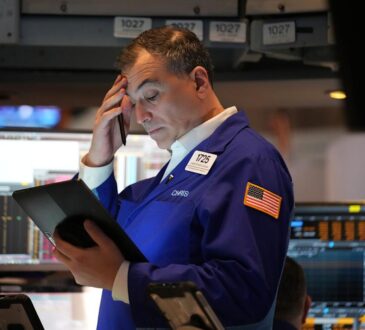
Last year, I wrote that Tesla (TSLA 0.49%) was a stock that investors should avoid in 2023. Boy, was I wrong about that one. The electric vehicle (EV) leader saw its shares rise 94% so far this year, crushing the S&P 500, which has returned less than just 20% year to date (YTD). Despite wild antics from CEO Elon Musk — who is taking a lot of time managing his acquisition of Twitter — and declining profit margins, investors have shown extreme optimism for Tesla in 2023.
If you didn’t own the stock in 2023, you might have some FOMO (fear of missing out) around Tesla right now. Is the stock set to soar yet again in 2024? Let’s take a closer look.
Declining selling prices, competition floundering
A big theme for Tesla in 2023 was cutting prices for its EV product suite, most importantly the Model 3 and Model Y. You can see this show up in the average price of a used Tesla, which has collapsed in value this year. To start 2023, the average used Tesla went for around $55k in the United States, and that has fallen to below $40k as of this writing. This is a 27% decrease YTD compared to just 2.3% for the average used car in its home market.
Financially, this has shown up in Tesla’s profit margins. Over the last 12 months, the company has posted an operating margin of 11.2%, down from a peak well above 15% a few quarters ago. In its latest quarter, operating margins slipped to a measly 7.6%. All this is a result of the company’s decision to drastically cut the selling prices for new vehicles.
This move has led to an increase in unit sales (total vehicle deliveries grew 27% year over year last quarter) but a decline in earnings. Over the last 12 months, operating income is down 22% year over year. At the end of the day, earnings growth is what will matter over the long term, not how many cars Tesla sells to customers.
On a positive note, these price decreases seem to be causing some competitors to retrench their EV plans. Both Ford and General Motors paired back their growth plans for EV product lines after seeing falling demand from customers this year. Could this be due to Tesla’s price cuts? Perhaps. For Tesla investors, it could be beneficial for these legacy companies to delay rolling out mass-market EV products, as they are still years behind Tesla’s production capacity.
However, Tesla does have some concerning competition coming out of China with BYD Company. The EV maker almost passed Tesla in overall unit volumes last quarter and is growing much more quickly. It plans to keep growing in its home market and every region around the globe, outside North America (where a Chinese automaker would not be geopolitically feasible). If BYD keeps up this impressive growth, it could crowd out Tesla’s global expansion plans.
Can new products reinvigorate growth?
One way to fight new competition is to release new products. Tesla has a few in the pipeline, including the Cybertruck, Tesla Semi, and a premium Roadster vehicle. It is unclear when the Semi or Roadster will start hitting the production lines, but the Cybertruck is now finally bringing vehicles out to customers.
Analysts expect the product line to start delivering 250k vehicles to customers by 2025. The problem is that this makes only a slight dent in Tesla’s unit volumes, with the company closing in on 2 million in annual unit volumes worldwide.
The key for Tesla is not commercial trucks or premium cars. It is bringing a true, affordable EV to the masses. This means bringing out a new vehicle (or an update to the Model 3 or Model Y) that most car buyers can afford. Despite the high inflation that has hit the globe, the price point for this vehicle will likely need to be below $30k.
If Tesla can achieve this while generating a profit, the company should be able to reinvigorate its earnings growth over the next five years. But to be clear, we have seen no signs of an affordable mass-market vehicle from Tesla as of today.

TSLA Operating Income (TTM) data by YCharts. TTM = trailing 12 months.
A sobering valuation discussion
After shooting up close to 100% in 2023, Tesla now has a market cap of approximately $761 billion. Running the numbers, the stock looks mighty expensive at this market capitalization. Over the last 12 months, the company has generated a net income of $10.8 billion, or a price-to-earnings ratio (P/E) of 70. That is around 3 times the average P/E of the S&P 500.
The stock could easily double again in 2024. Predicting price movements over the short term is nearly impossible. But if you are planning to buy shares of Tesla for the long haul, you need to understand the stock is pricing in a lot of earnings growth over the next five to 10 years. From my seat, that makes Tesla a poor stock to buy in 2024. You can find better large-cap stocks to own in your portfolio.
Brett Schafer has no position in any of the stocks mentioned. The Motley Fool has positions in and recommends BYD and Tesla. The Motley Fool recommends General Motors and recommends the following options: long January 2025 $25 calls on General Motors. The Motley Fool has a disclosure policy.




